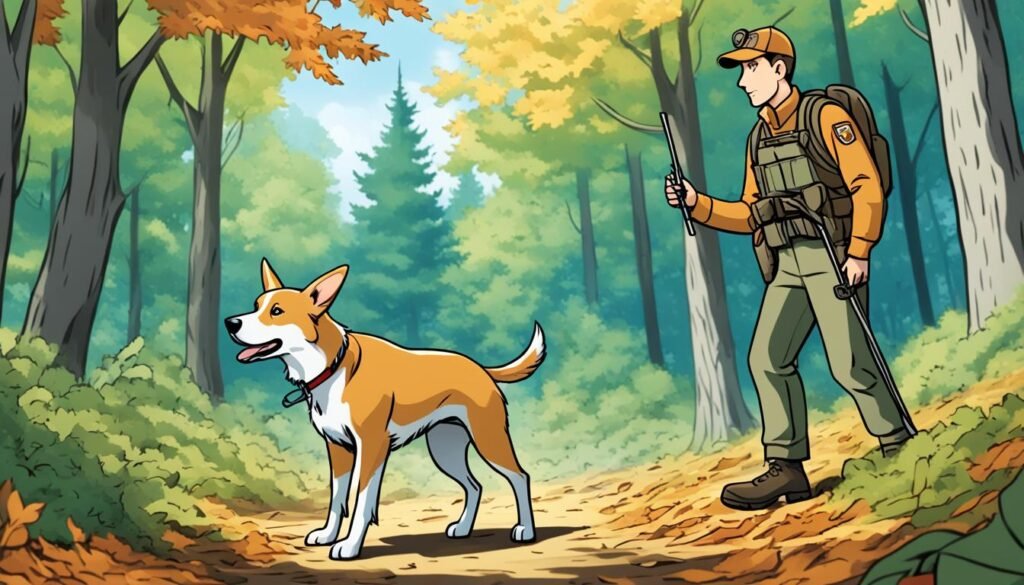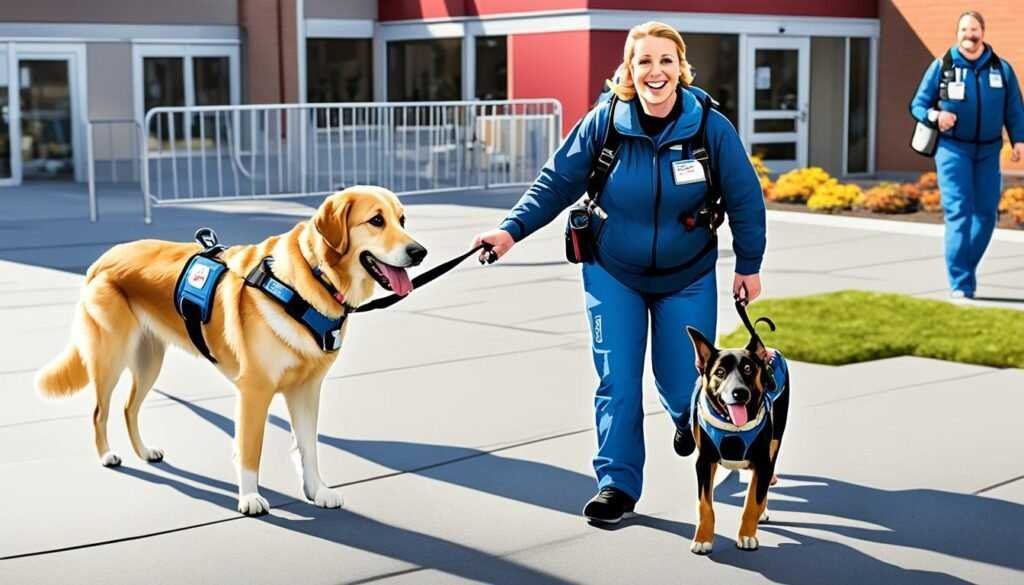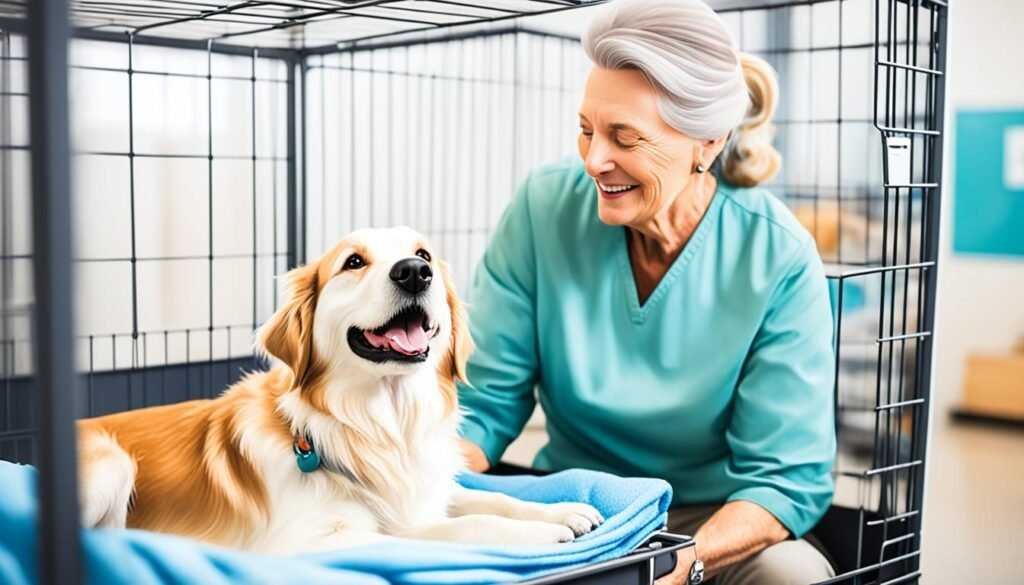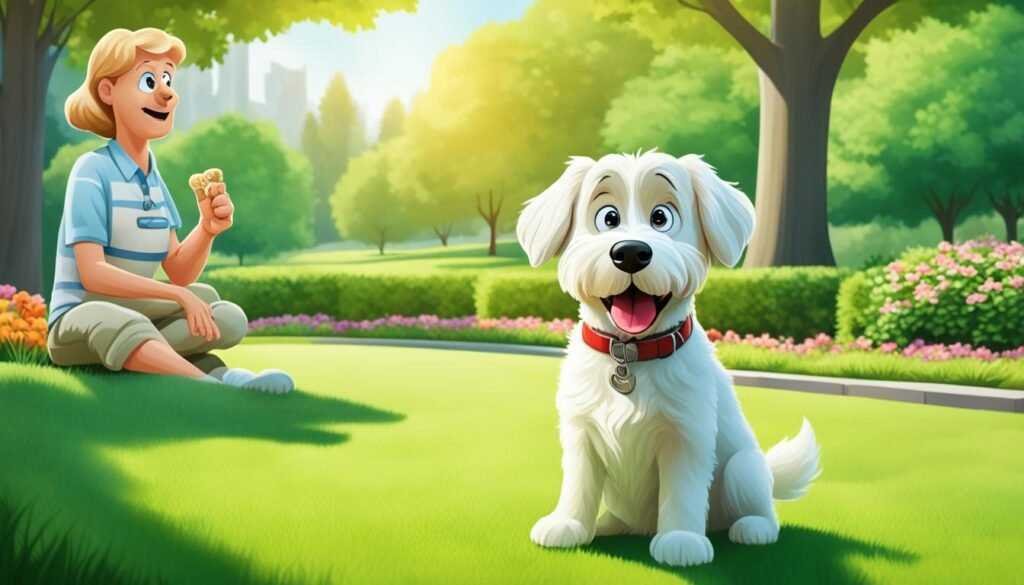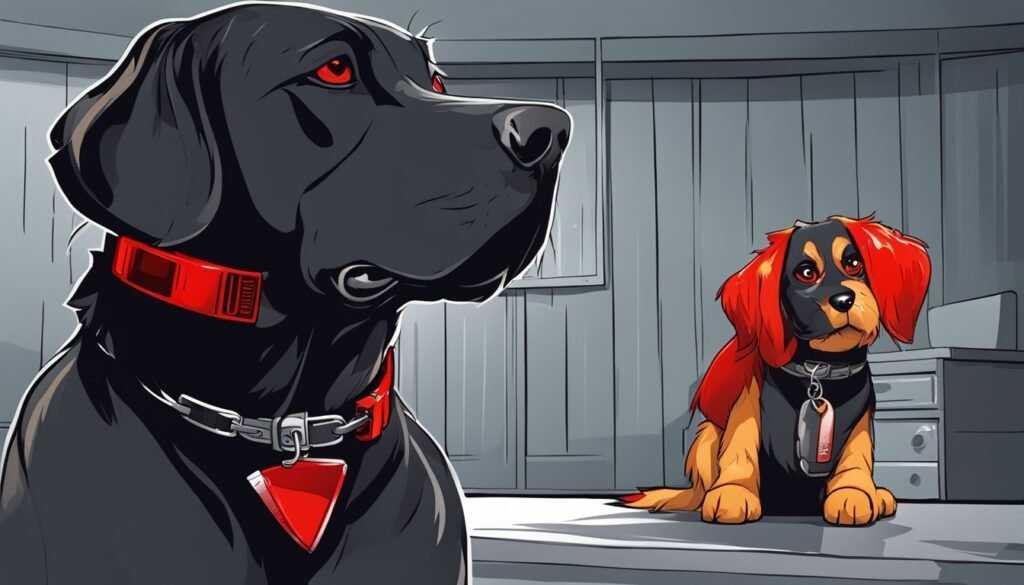- Understanding Labrador Retrievers
- Preparing for Training
- Basic Obedience Training
- How To Train A Labrador Retriever for hunting
- Advanced Training Techniques
- Socializing Your Hunting Labrador
- Addressing Behavior Problems
- Conclusion
- FAQ
- What are the essential training tools for a Labrador Retriever puppy?
- How do I start basic obedience training with my Labrador Retriever?
- What are some advanced training techniques for Labrador Retrievers?
- How do I socialize my Labrador Retriever?
- How do I address behavior problems in my Labrador Retriever?
Are you proud to own a Labrador Retriever and want to make them a great hunting dog? You’re in the right place! We’ll share expert tips and strategies to help your Lab become a skilled hunting partner.
Labradors are known for their amazing hunting skills and their desire to learn. With the right training and practice, you can make your Lab a dependable hunting dog. This guide is perfect for both experienced hunters and first-time Labrador owners.

We’ll cover everything from basic obedience to advanced hunting skills. You’ll learn how to build a strong foundation and teach your Lab specific hunting commands. We’ll also address any behavior challenges you might face.
Experienced trainers and hunters will guide you every step of the way.
Let’s start and learn how to make your Labrador a great hunting companion. Get ready for the excitement of a successful hunt with your loyal dog by your side!
Understanding Labrador Retrievers
Labrador Retrievers are a top choice worldwide, known for being friendly, smart, and easy to train. They come from Newfoundland, Canada, and were first bred to help fishermen.
They’re great at swimming, have a strong sense of smell, and work well with people, making them perfect for hunting.
Breed History and Characteristics
These dogs are medium to large and have a short, thick coat in black, chocolate, or yellow. They love people and are eager to please, making them ideal family pets. They’re also easy to train for various jobs, including hunting.
“Labradors are frequently used as therapy dogs due to their temperament.”
Why Labradors Make Great Hunting Dogs
Labradors are amazing in the water and have a great sense of smell. They’re happy to work with their owners, which makes them top-notch hunting dogs. They’re great at finding and retrieving birds in both water and on land.
If you want a loyal pet or a hunting buddy, consider a Labrador Retriever. They’re smart, friendly, and easy to train. This makes them a top pick for many activities and roles.
Preparing for Training
Before starting training with your Labrador Retriever, make sure you have the right tools and a dedicated area. Having the right labrador retriever training tools and a good labrador retriever training area is key for success.
Essential Training Tools
Important tools for a Labrador Retriever include a strong crate for crate training, a tough leash for leash training, and fun chew toys. A crate helps with potty training and stops bad habits. A leash is crucial for obedience and keeping your pup safe on walks.
Chew toys help puppies with teething by keeping them away from furniture.
Creating a Designated Training Area
Having the right tools is just the start. You also need a special area for training your Labrador. This spot should be quiet and big enough for your dog to move around. Think about your dog’s safety and comfort when setting it up. This way, they can focus on training without getting distracted.
| Training Facility Features | Recommended Specifications |
|---|---|
| Total Area | 141 acres |
| Water Sources | 6 water sources |
| Number of Dogs per Group | 3-4 dogs with their handlers |
| Recommended Marks per Day | 2-6 good marks |
| Retrieves per Outing | 2-3 retrieves per dog |
With the right tools and a special area, you’re ready to train your Labrador. This will get your pup ready for hunting season.
Basic Obedience Training
Teaching your Labrador Retriever basic obedience commands is key. Start with “sit,” “stay,” “come,” and “heel.” Use treats and praise to reward them when they listen.
Leash training is also vital. It helps your Lab walk nicely by your side. Crate training is great for house-training, making them think of their crate as safe.
The first few months are critical for training your Labrador. Research shows that young puppies under 4 months should be given treats to reinforce obedience. And the first five months are crucial for training a Lab puppy to be a duck or gun dog.
Early start and positive reinforcement set them up for success at home and in the field.
- Teach the basic commands: “sit,” “stay,” “come,” and “heel”
- Use positive reinforcement, such as treats and praise, to reward good behavior
- Introduce leash training to teach your Lab to walk calmly by your side
- Utilize crate training to aid in house-training your Labrador
- Start obedience training early, within the first few months of your Labrador’s life
| Training Technique | Benefits | Recommended Age |
|---|---|---|
| Obedience Commands | Establish basic control and manners | 2-6 months |
| Leash Training | Teach your Lab to walk calmly by your side | 3-6 months |
| Crate Training | Aid in house-training and provide a safe space | 8-12 weeks |
Mastering these basic skills prepares you for more advanced training. It ensures your Labrador Retriever is well-behaved at home and in the field. For more info on puppy basics, retriever training, and training your young bird dog, check these resources.

“Training Lab puppies early results in quicker learning and better obedience.”
How To Train A Labrador Retriever for hunting
Teaching Hunting Commands
Training a Labrador Retriever for hunting takes patience and understanding of their nature. Start with basic obedience, then move to hunting skills like retrieving and tracking. Begin with simple tasks and add complexity as your dog learns.
Teaching your Labrador the “retrieve” command is key. This means getting your dog to bring back birds or objects from the field. Use bumpers first, then move to live birds as your dog gets better. Make sure they know “fetch,” “hold,” and “release” to control them during retrieval.
Scent detection is also crucial for hunting Labradors. Teach your dog to find birds by their scent. Start in simple places, then make it harder by adding more complex scents and terrain.
- Use a recall command like “come” to make sure your Labrador comes back, even when excited.
- Teach the “steady” command to keep your dog calm, even with gunfire or wildlife around.
- Practice “sit,” “stay,” and “whoa” to keep your Lab from chasing game too soon.
Introducing Your Lab to Gunfire and Birds
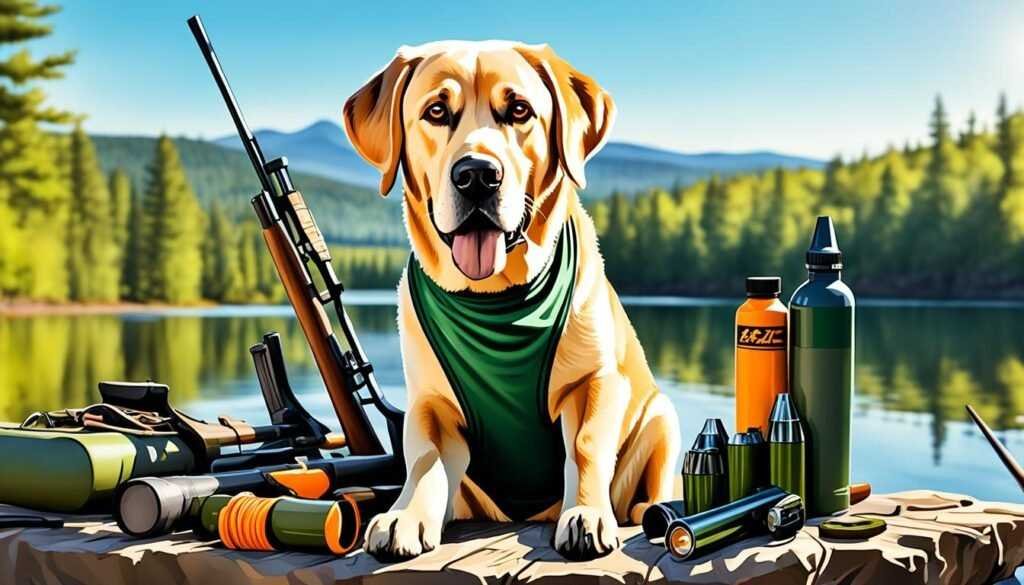
Keep training positive with praise, treats, and fun. This keeps your Labrador interested and motivated.
“A Labrador Retriever might miss a mark on a downed duck, prompting the use of a rock to draw attention to the bird.”
With patience and focus on building confidence, you can train your Labrador for hunting. Mastering commands and gradually introducing them to gunfire and birds will make them a great hunting partner.
Advanced Training Techniques
As your Labrador Retriever’s obedience skills grow, it’s time to explore advanced training techniques. These methods will elevate their performance and keep them mentally stimulated. They are perfect for teaching trick training and improving their hunting skills.
Mastering Trick Training
Trick training is a fun way to bond with your Labrador. It also keeps their mind active. Teach them tricks like “roll over,” “play dead,” and “fetch” to show off their intelligence and versatility.
Start with simple commands and gradually add more complex tricks as they learn the basics.
Enhancing Hunting Skills
For Labradors trained for hunting, advanced techniques can make them better hunters. Focus on teaching specific hunting commands and improving their bird retrieval skills. Training them for different terrains and environments will make them more confident hunters.
Addressing Behavior Modifications
If your Labrador has problem behaviors like jumping up, petty issues, or aggression, a behavior modification plan can help. Work with a professional trainer to use positive reinforcement and set clear boundaries. This will make your lab a well-behaved and trustworthy family member.
Advanced training is an ongoing process that needs patience, consistency, and understanding of your Labrador’s personality. With the right approach, you can turn your lab into a true superstar. They can excel in trick skills or hunting.

“The key to successful advanced training is to make it fun and rewarding for your Labrador. Keep sessions engaging and always end on a positive note.”
– Trainer Barton Ramsey, with 30 years of experience in retriever training.
Socializing Your Hunting Labrador
Importance of Socialization
Socializing your Labrador Retriever is key to their growth and behavior. Start socializing your puppy between 3 to 14 weeks old. This is when they are most open to new things and less likely to fear or become aggressive.
By exposing them to various people, dogs, and places, you help them learn good behavior and avoid problems later.
Introducing Your Lab to Different Environments
Take your puppy to dog parks or puppy classes for positive social experiences. These outings introduce them to new sights, sounds, and situations.
They’ll learn to handle different surfaces, textures, and noises, like traffic and game birds. Doing this in a calm way helps them feel confident and well-adjusted.
Early and often exposure to other animals, especially in hunting settings, improves focus and reduces distractions. By socializing your Labrador during this critical time, you make them a better hunting partner.
- Expose your Labrador puppy to different environments, people, and other dogs during the crucial 3 to 14 weeks socialization window.
- Take your puppy to dog parks and puppy classes to facilitate positive social interactions and introduce them to new sights, sounds, and situations.
- Gradually expose your Labrador to hunting-related stimuli, such as gunshots and game birds, in a calm and positive manner.
- Socialization at an early age can help your Labrador become a confident and well-adjusted hunting companion.

“Successful socialization of a Labrador Retriever is key to developing a well-rounded hunting dog. By exposing your pup to new environments and experiences early on, you’re setting them up for a lifetime of confidence and adaptability in the field.”
Addressing Behavior Problems
As a Labrador Retriever parent, you might face issues like jumping, potty problems, or aggression. It’s key to tackle these issues early to prevent bigger problems later. A well-planned training approach can help find the cause and fix it.
If your Labrador jumps on people, teach them to sit instead. This simple command can change their excited behavior. For potty problems, a regular routine and rewards for going outside work well.
For aggression, get help from a pro dog trainer or behaviorist. They ensure your Labrador and others stay safe. They’ll create a training plan for the specific issues.
Modifying Jumping Behavior
Labrador Retrievers often jump because they’re excited and want attention. Teach them the “sit” command and praise them for calm greetings. With time and treats, they’ll learn sitting is better than jumping.
Addressing Potty Training Challenges
Potty training can be tough, but with patience and a plan, your Labrador can learn. Take them out at the same times every day and reward them when they go in the right spot.
Don’t scold them for accidents. This can make things worse. Instead, focus on the good behaviors and adjust your training as needed.
Managing Aggression
Aggressive behavior like growling or biting needs quick action with a pro dog trainer or behaviorist. They’ll find out why your Labrador is aggressive and make a training plan. This might include socializing your dog, changing their feelings, and using positive rewards.
Dealing with behavior problems in Labrador Retrievers takes time, consistency, and sometimes professional help. By working on these issues, you can make your dog a better and happier friend.
| Behavior Issue | Training Approach | Key Considerations |
|---|---|---|
| Jumping | Teach the “sit” command and reward calm greetings | Consistency is key to reinforce the desired behavior |
| Potty Training | Establish a consistent routine and reward outdoor elimination | Avoid punishing accidents, focus on positive reinforcement |
| Aggression | Seek professional help from a dog trainer or behaviorist | Address underlying causes through socialization and counter-conditioning |
Conclusion
Turning your Labrador Retriever into a great hunting partner takes hard work, patience, and knowing the breed well. This guide offers expert advice to help you and your Labrador grow closer and reach their best potential.
Starting with obedience training and then adding hunting skills is vital. Each step is important for making your dog a good hunter. This guide is useful for both new and experienced Labrador owners. It will guide you in training your Lab to be an excellent labrador retriever hunting companion.
Key to success are regular practice, positive rewards, and meeting your Labrador’s unique needs. Be ready to adapt and celebrate your progress. Enjoy the rewarding experience of hunting with your skilled and dependable Labrador.
FAQ
What are the essential training tools for a Labrador Retriever puppy?
A crate, leash, and chew toys are key for a Labrador Retriever puppy. A crate helps with potty training and stops bad behavior. A leash is vital for obedience training and keeping your puppy in check during walks.
Chew toys help with teething and keep your puppy from chewing on things they shouldn’t.
How do I start basic obedience training with my Labrador Retriever?
Begin with basic commands like “sit,” “stay,” “down,” and “come.” Use treats and praise to reward your dog for following commands. Leash training teaches your dog to walk nicely by your side. Crate training is also helpful for house training your Labrador.
What are some advanced training techniques for Labrador Retrievers?
Advanced training includes teaching hunting commands, retrieving birds, and working in various terrains. You can also teach your Lab tricks like “roll over,” “play dead,” and “fetch.” This keeps them mentally active.
How do I socialize my Labrador Retriever?
Socialization starts when your puppy is between 3 to 14 weeks old. Introduce them to different places, people, and dogs in a safe setting. Dog parks or puppy classes are great for positive social experiences.
How do I address behavior problems in my Labrador Retriever?
If your Labrador has behavior issues like jumping or potty problems, address them quickly. Use a structured training plan to find and fix the root cause. For example, teach your Labrador to sit when greeting people or stick to a consistent potty routine.

